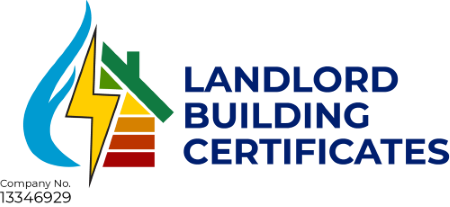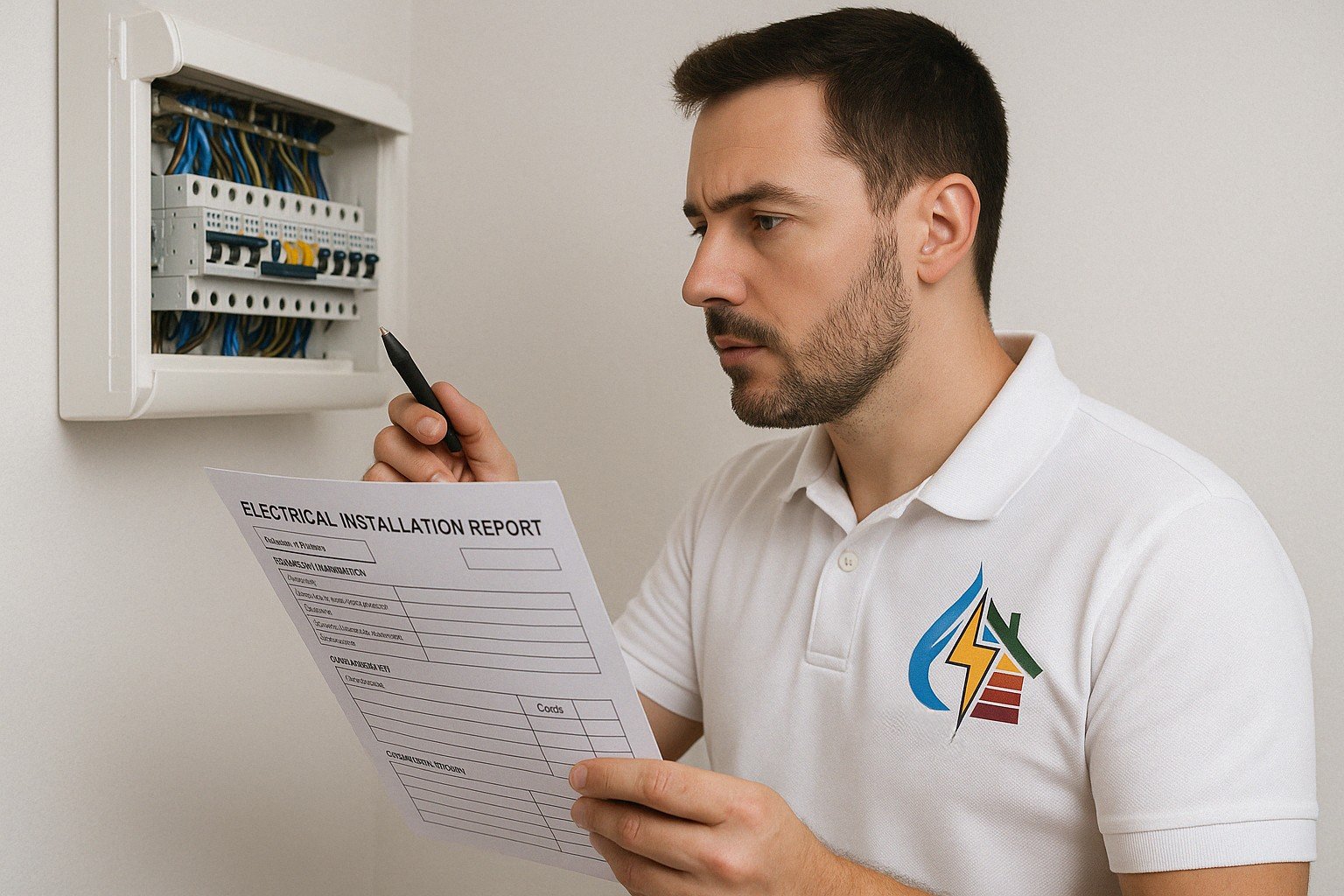Who is responsible for the EICR on a commercial property in the UK?
The responsibility for organising an Electrical Installation Condition Report on a commercial property in the UK usually falls on the commercial landlord. This includes ensuring the electrical installation is inspected and tested by a qualified and competent electrician. However, if the lease agreement specifies that the tenant is responsible for maintaining the property, such as in a fully repairing and insuring lease, then that duty may pass to the tenant. Confirming this through a clearly worded lease agreement is essential to avoid confusion and ensure electrical safety compliance.
Here's What We Have Covered In This Article
What is an EICR and why is it required?
An Electrical Installation Condition Report is a formal document produced following an assessment of the electrical systems within a commercial building. It involves detailed inspection and testing of fixed electrical components including consumer units, wiring systems, switches, sockets and light fittings. The purpose of the EICR is to identify any defects, deterioration or deviations from current wiring regulations that could present a risk of electric shock or fire. It ensures compliance with statutory obligations such as the Electricity at Work Regulations 1989 and supports building safety under the Health and Safety at Work Act 1974.
What are a commercial landlord’s legal obligations?
Does the landlord need to ensure electrical safety at the start of a lease?
Yes. A commercial landlord must confirm that the electrical installation is safe before a new tenant moves into the premises. The legal responsibility includes the provision of safe electrical systems and ensuring they are maintained throughout the tenancy. This obligation is established under the Landlord and Tenant Act 1985 and supported by safety duties in the Occupiers’ Liability Act 1957 and 1984.
Ongoing compliance
Landlords are expected to arrange periodic inspection and testing of electrical installations to ensure continued safety. The recommended interval for EICR inspections is every five years, although more frequent checks may be needed for higher risk settings or older buildings. Property owners are advised to keep full records of all inspection reports and any associated remedial work. For information about landlord safety responsibilities, see the UK Government guidance on Electrical Safety Standards in the Private Rented Sector.
When is the tenant responsible for the EICR?
If the commercial lease is structured as a fully repairing and insuring agreement, the tenant may assume responsibility for both the cost and organisation of the EICR. These lease arrangements typically transfer ongoing maintenance duties to the tenant, which can include electrical inspections. The lease should specifically outline this responsibility to ensure that legal duties are met and that both parties understand their roles.
Unclear lease terms can lead to disputes, and so landlords and tenants are encouraged to include explicit clauses about electrical testing obligations. This prevents legal ambiguity and supports safe occupation of the premises.
What does the EICR inspection involve?
A qualified electrician will carry out several tests during an EICR including:
At the end of the assessment, the electrician issues a report that includes coded observations:
-
Code C1: Immediate danger
-
Code C2: Potential danger
-
Code C3: Improvement recommended
Issues classified as C1 or C2 must be resolved quickly to ensure the installation remains safe. This is necessary to meet safety standards set by the British Standard BS 7671, also known as the IET Wiring Regulations.
How often should commercial EICRs be carried out?
The general recommendation for most commercial properties is to undertake an EICR every five years. However, environments that present higher electrical risks such as commercial kitchens, manufacturing facilities or healthcare clinics may require inspections more frequently. The frequency should reflect the building usage, occupancy patterns and condition of the installation.
If a property undergoes significant electrical work or experiences a change in tenancy, an earlier inspection may be necessary. For full compliance, inspections should be scheduled in line with advice from a registered electrician or professional body such as NICEIC or ELECSA.
What happens if the EICR is not carried out?
If a commercial property does not have a current and satisfactory EICR, there are both safety and legal consequences. Landlords and tenants may face enforcement action by local authorities, invalidated insurance claims and in some cases prosecution. Penalties under the Housing Act 2004 can reach up to £30,000 per breach, and insurers may refuse to pay for damage or injury caused by electrical faults if inspections have been neglected.
Neglecting electrical safety responsibilities not only risks legal and financial exposure but also endangers the wellbeing of employees, customers and visitors. Electrical faults are a leading cause of commercial fires, and proactive inspections are a key part of managing building risk.
Protect Your Property and Your Business
Avoid fines and keep your tenants safe. Let us manage your electrical compliance and scheduled inspections.
Who is responsible for EICR in multi-tenant commercial buildings?
In buildings that house multiple tenants, responsibility is often shared. Landlords typically arrange inspections for communal areas such as staircases, toilets and lifts. Each tenant may be responsible for their individual units, depending on the lease agreement.
For example, in serviced offices or co-working environments, the property owner or management company usually retains overall responsibility for the electrical system. If a dispute arises over who should arrange the EICR, it is best resolved by referring to the lease or obtaining legal advice. Agreements should be reviewed and updated regularly to ensure clarity.
For more information on duties in shared buildings, visit the Health and Safety Executive’s section on Electricity in the workplace.
Best practices for EICR compliance in commercial leases
-
Ensure lease agreements clearly define responsibilities for electrical safety and EICR inspections
-
Use electricians registered with NICEIC, ELECSA or NAPIT to ensure inspections meet recognised standards
-
Keep all records of inspections, certificates and remedial work in a secure file
-
Schedule inspections in advance to avoid accidental non-compliance
-
Communicate regularly with tenants or landlords to maintain shared understanding
Need to Book a Commercial EICR?
Ensure your building stays compliant and safe. We work with NICEIC-approved electricians across the UK to deliver certified inspections.
Who pays for the EICR in commercial property?
The cost of an EICR depends on who is assigned the duty in the lease. If the lease says the landlord retains responsibility for the building’s condition, then the landlord pays. If the lease makes the tenant responsible for repairs and maintenance, then the tenant is expected to arrange and fund the EICR.
Having a written lease that includes these obligations ensures that there are no unexpected costs or legal conflicts later. If in doubt, seek guidance from a solicitor with experience in commercial property law.
Summary of responsibilities
-
Landlords: Must ensure electrical systems are safe unless the lease says otherwise
-
Tenants: May be responsible under fully repairing and insuring leases
-
Property managers: Can coordinate inspections but legal responsibility must be contractually clear
-
Electricians: Must be registered and qualified to issue valid EICRs
Frequently asked questions
1. Is an EICR legally required for commercial buildings? Yes. The Electricity at Work Regulations 1989 require employers and property owners to ensure the electrical systems are safe. An EICR provides the necessary proof.
2. What does an EICR include? It includes testing and inspection of all fixed electrical installations such as wiring, circuit breakers and sockets, followed by a report with observations and recommendations.
3. Who pays for EICR in a fully repairing lease? If the lease states that the tenant is responsible for repairs and maintenance, then the tenant pays for the EICR.
4. What happens if a commercial property fails the EICR? Any serious issues must be fixed immediately to keep the property safe and legal. Until repairs are completed and confirmed, the premises may not be safe to occupy.
5. Can I use any electrician for the EICR? No. Only electricians registered with a recognised body like NICEIC, ELECSA or NAPIT are qualified to carry out EICR inspections for commercial properties.




